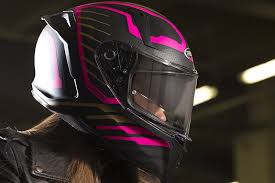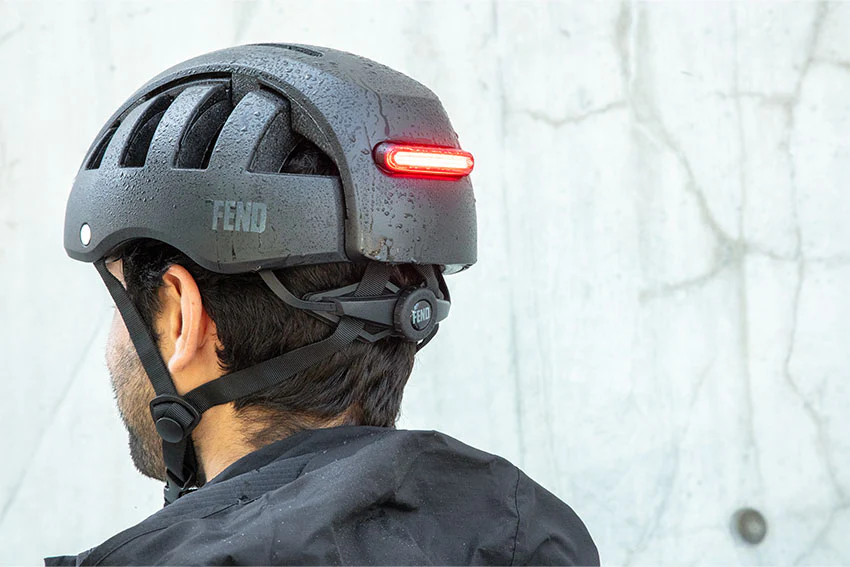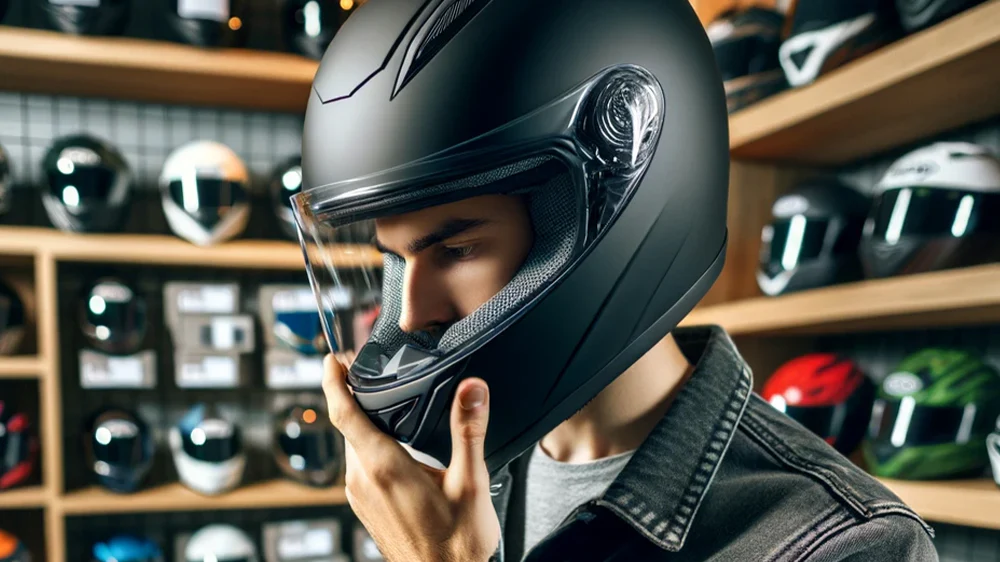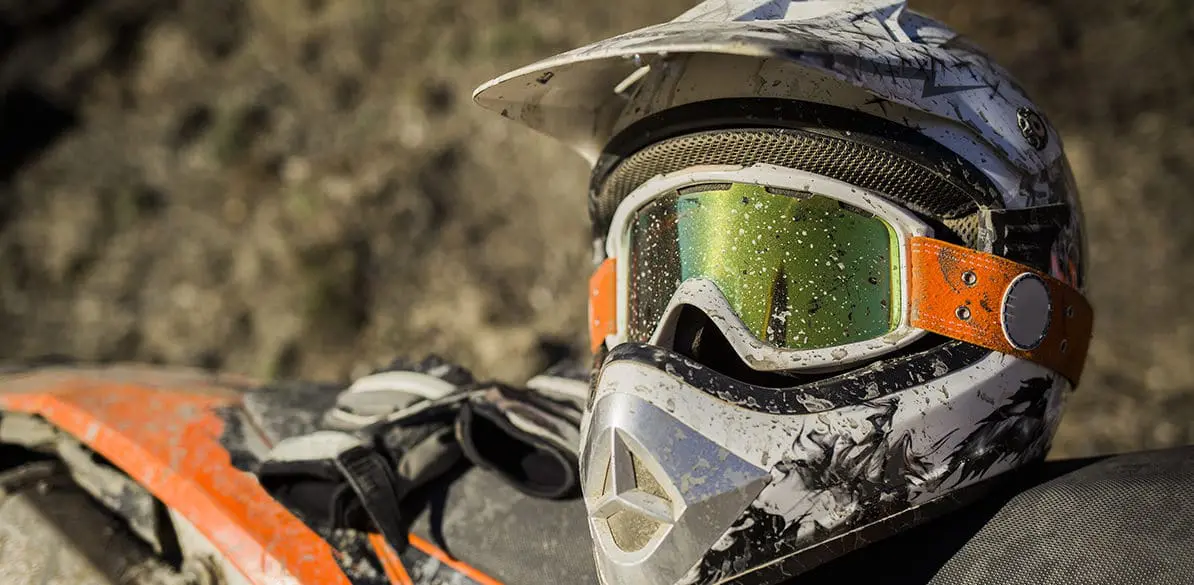When it comes to motorcycle safety, the fit of your helmet is just as important as its quality and features. An ill-fitting helmet can cause discomfort, distraction, and even compromise your safety in the event of an accident. Finding the perfect helmet fit ensures optimal protection and comfort for every ride. Here’s your comprehensive guide to choosing the right motorcycle helmet fit.
1. Why Helmet Fit Matters
Your helmet is your first line of defense when riding. A helmet that fits well provides:
-
Proper Protection: A helmet that’s too loose may not stay in place during a crash, while one that’s too tight can cause discomfort and even harm.
-
Enhanced Comfort: A good fit means you’ll feel more comfortable during long rides, avoiding pressure points or headaches.
-
Noise Reduction: Helmets that fit properly reduce wind noise and distractions while riding.
Proper fit is essential, so don’t settle for a “one-size-fits-all” mentality.
2. How to Measure for the Right Helmet Size
Before purchasing a helmet, it’s crucial to measure your head correctly. Follow these steps to find your helmet size:
Step 1: Measure Your Head
Use a soft measuring tape to measure around the circumference of your head. Wrap the tape around the widest part of your head, just above your eyebrows and ears. Make sure it’s snug but not too tight.
Step 2: Consult a Size Chart
Different helmet brands may have slightly different sizing charts, so it’s always best to refer to the manufacturer’s size chart. Helmets are generally sized in small (S), medium (M), large (L), and extra-large (XL), with corresponding measurements in centimeters or inches.
-
Small: 53–54 cm (20.9–21.3 in)
-
Medium: 55–56 cm (21.7–22 in)
-
Large: 57–58 cm (22.4–22.8 in)
-
Extra Large: 59–60 cm (23.2–23.6 in)
If your measurement falls between two sizes, try the smaller size first, as helmets will naturally expand over time.
3. How Should the Helmet Fit?
Once you’ve selected your helmet size, here’s what a good fit should feel like:
-
Snug but Comfortable: The helmet should fit snugly all around your head, without pinching, but should not slide around. When you move your head, the helmet should move with it.
-
Even Pressure: The interior of the helmet should apply even pressure around your entire head, especially around your forehead and cheeks. If there’s too much pressure in one spot, the helmet may be too tight.
-
Chin Strap: Once the helmet is on, the chin strap should be securely fastened. You should be able to insert one or two fingers under the strap, but it shouldn’t be loose.
4. Different Types of Helmet Fits
There are several types of helmet fits to consider, depending on your riding style and the type of helmet you’re choosing:
-
Round Oval: This is the most common head shape. If your head is more rounded, you’ll typically find helmets designed for this fit to be more comfortable.
-
Intermediate Oval: This shape is a balance between round and long oval heads, offering a comfortable fit for those with slightly longer heads.
-
Long Oval: Long oval helmets are best for riders with heads that are longer from front to back than side to side.
Make sure to try on helmets in different shapes to find one that matches your head shape and provides the most comfortable fit.
5. Try Before You Buy: The Helmet Test
Once you’ve selected a helmet size, it’s crucial to test the fit before buying. Here’s how you can ensure the helmet is right for you:
-
Wear the Helmet: Put the helmet on and fasten the chin strap. Move your head side to side and up and down. The helmet should stay snugly in place without shifting.
-
Check for Pressure Points: The helmet should feel snug all around. If it feels tight or there are pressure points, it might not be the right fit.
-
Look in the Mirror: Check that the helmet fits properly over your forehead. It should sit about 1-2 inches above your eyebrows.
-
Move the Helmet: Try to move the helmet by grasping it at the back. If it slides, it’s too loose. If it’s hard to move, it may be too tight.
6. Helmet Types and Their Fits
Different types of helmets offer different fits and features. Consider these common types:
-
Full-Face Helmets: Provide complete coverage of the head and face. They are typically snugger and more secure than other helmet types.
-
Modular Helmets: These helmets offer a combination of full-face protection and the convenience of an open-face helmet. When choosing a modular helmet, it’s essential to test the chin bar to ensure it stays securely in place.
-
Open-Face Helmets: Offer less coverage but are ideal for riders seeking more visibility and ventilation. While these may be looser, they should still fit securely around the head.
-
Half Helmets: A classic option for riders who prefer minimal coverage. While these helmets are less restrictive, they still need to fit securely around the head to be effective in case of an accident.
7. Adjustable Fit Systems
Some modern helmets come with adjustable fit systems. These features, such as a dial or strap adjustment system, allow you to fine-tune the fit for maximum comfort. These systems are especially beneficial for riders who experience slight changes in head size due to factors like temperature or moisture.
8. Signs Your Helmet Doesn’t Fit
It’s essential to recognize the signs of a bad fit. These signs include:
-
Helmet Shifting: If the helmet slides or moves around on your head, it’s too big or not properly adjusted.
-
Pain or Discomfort: A tight helmet that causes pain or pressure on certain spots is not the right fit.
-
Noise: Excessive wind noise or hearing your own voice loudly may indicate the helmet isn’t sealed properly.
Conclusion
Choosing the right helmet fit is essential for both comfort and safety. A helmet that fits properly ensures protection in case of an accident, reduces discomfort during long rides, and keeps you focused on the road.
Always measure your head, check the helmet’s fit, and test different styles and types to find the one that’s right for you. A well-fitted helmet will be a true companion on your motorcycle adventures, offering peace of mind and confidence on every ride.









